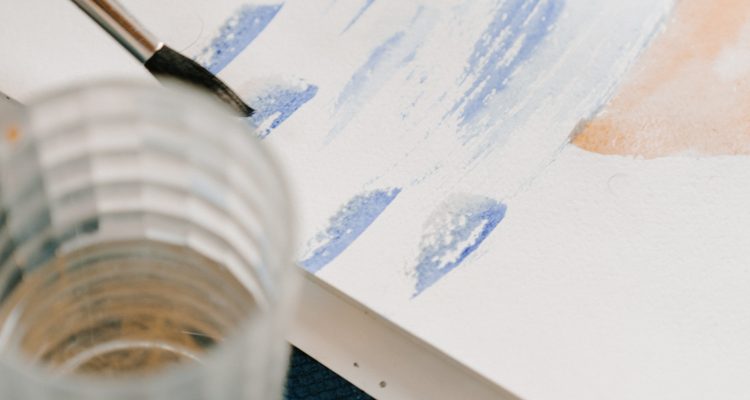By Jonathan Kopeliovich
The Rainbow Center hosted a therapeutic art session at their cultural center to spread awareness of Suicide Prevention Month on Friday, October 1st. Twenty participants sat down together to paint freely.
The Rainbow Center’s mission states that part of their goal is to facilitate “community-building for queer and trans-spectrum communities.” As part of this mission, the painting session was created to emphasize the struggles that LGBTQ+ people face in mental health. The Rainbow Center also supports queer students through events like the upcoming Queer Symposium. It will consist of several workshops concerning topics like queer education and trans identity.
Tatyanna Molina, a Sociology and Women Gender and Sexuality Studies senior, is one of the co-leaders for the Student Program Team at the Rainbow Center.
“I paint almost every single day for at least an hour so I do acrylic usually. So I love using different mediums to express myself and as a senior, I’ve noticed that it drastically reduces my stress levels,” Molina said.
The struggles for LGBTQ+ people warrant the promotion of art as a coping mechanism. A 2016 study by the CDC calculated that LGBTQ+ youth are six times more likely to attempt suicide compared to heterosexual youth. A 2008 meta-analysis presented by M. King et al. stated that lesbian, gay, and bisexual youth are 1.5 times as likely to experience anxiety or depression over a period of 12 months or a lifetime.
To Molina, art served as a platform for self-expression. If students can channel their frustrations into a work of art, the act of creation becomes cathartic and serves as a healthy coping mechanism. In a study of 39 adults by Kaimal et al, the stress hormone cortisol was lowered after a 45-minute session of making visual art.
Annchi Li, a mechanical engineering senior, is the other co-leader of the Student Programs Team.
“Whether you like music or you like or like writing or you like reading, I think all of those are like forms of art. So I think everyone in some way either creates something or consumes something and so the art is important”, Li said.
Art as therapy is part of a bigger group of therapies called expressive therapies. Heathline states that expressive therapy can include film, art, music, and dance among others.
Art therapy also exists in a clinical setting. Briana Benn-Mirandi, a clinical art therapist and owner of private practice Art and Soul in Madison, discussed what a typical session looks like.
“The clients will then kind of work to create a body like a portfolio of artwork, with new art each session added. And in those pieces of artwork, we often see patterns. We’ll see patterns and we’ll see things that can sometimes confirm thoughts that we’ve had about,” Benn-Mirandi said.
While art therapy can be a good tool for mental health, there are some barriers for marginalized groups. The Trevor Project states that LGBTQ+ people experience vast mental health disparities like cost of care. Major insurance companies like Anthem have recently started accepting art therapy as a valid form of healthcare, as described on the Art and Soul website. Learn more about what the Rainbow Center is doing at https://rainbowcenter.uconn.edu/.


